Daylesford - Wombat Hill Botanical Gardens


Locals and visitors have been enjoying the panoramic views and beautiful surrounds of the Wombat Hill Botanic Gardens since the 1860s. The 11 hectare gardens are perched high on the summit of an extinct volcano, it's the perfect spot for a picnic. Climb the Pioneers Lookout Tower for uninterrupted views of Daylesford town and surrounds, take in the colour and magnificent floral charms of Begonia House, or get a taste for local legend Alla Wolf-Tasker's cuisine at the Wombat Hill House cafe.
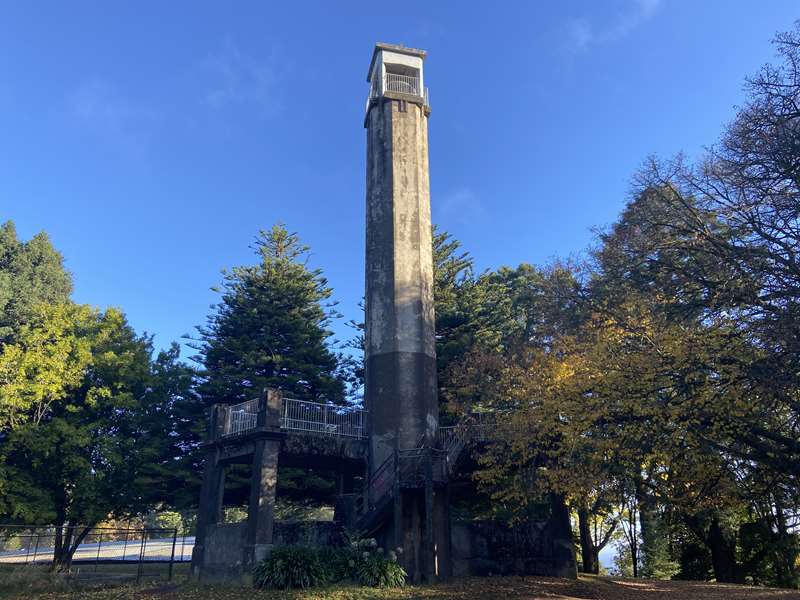
Wombat Hill Botanical Gardens Map
The Wombat Hill Botanic Gardens are also known as the Daylesford Botanic Gardens.
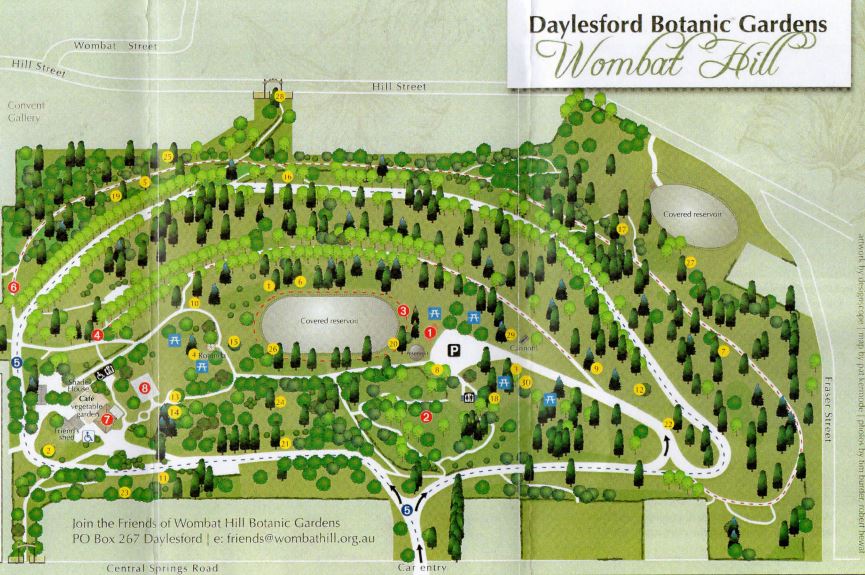

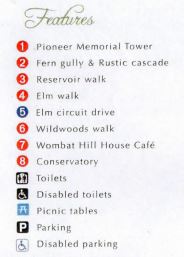
As a public garden it offers walks, lawns and secret places for you to discover.
As a Botanic garden it is the home of a fern gully, huge conifers and exotic trees that show how European trees adapted to cool conditions at this altitude. Some grow better here than anywhere else in the world.
- Sit in the peace and tranquillity of an established garden
- Stroll around the shady lower north track and enjoy views to the surrounding farmland
- Climb the Pioneer Lookout Tower to see the forest around us and count the volcanoes that ring the horizon
- Explore the dense shade of the Fern Gully and its Rustic Cascade
- Picnic on the lawns or eat lunch at the Wombat Hill House cafe which serves breakfast, brunch, lunch, wine & takeaway on certain days
- Play tree chasey along the elm avenue
- Admire the begonias in the Conservatory when in season
- Walk down the Hill Street exit path to the heritage-listed lindens that line Wombat Street, and link to the town or the Sunday Market
- In autumn, admire the lush begonias; scuffle through the fallen leaves and see their fabulous range of colours
- Winter's mists wrap the dark conifers; you'll see hellebores in flower and the occasional snowfall;
- Spring-flowering bulbs and rhododendrons; summer's picnickers cool under shady trees.
Amazing Begonias
The spectacular display runs through March - May.
Making a collection
The begonia collection was started by W. Gascoigne, Curator from 1885, a Frenchman and experienced horticulturist, who grew tuberous begonias in the conservatory. The plants were grown again in the 1930s in a new glasshouse; Curator Bill Greville obtained 45 plants from the Ballarat City Council, 30 from Queens Park in Essendon, and soon had 250 tubers including a (lost) one named 'Daylesford'.
When Alf Headland was appointed part-time Caretaker in 1956, he found two tubers in the wood shed and became expert at their cultivation, continuing well into his retirement when Greg Rae took over. This 1988 conservatory was named to honour Alf Headland's work.
Begonias
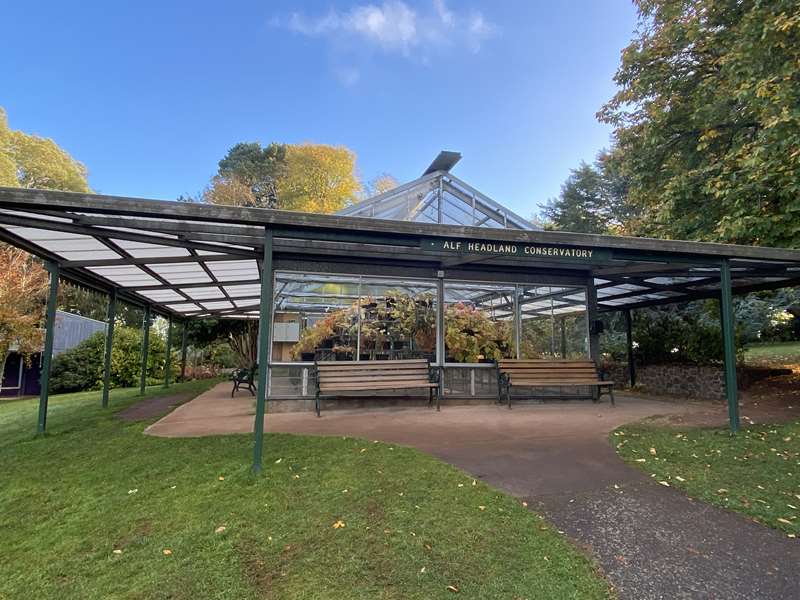
In 1690, Charles Plumier, a Franciscan Monk and botanist, discovered six new plants in the West Indies. He dedicated the new genus to his patron, Michel Begon, who had a strong interest in botany, and was at that time Governor of Haiti in the Antilles.
The Begoniaceae family has 2500 known and identified species, plus thousands of hybrids in a wide range of sizes and styles of flower and growth habit. Tuberous begonias known far their fancy flowers are Begonia x tuberhybrida, developed from a few species from The Andes, Bolivia, in South America. In their natural environment, begonias grow in rain forests and in the tropical and subtropical regions of the world, often at high altitudes.
The garden has 75 varieties of tuberous begonia, and a dozen of the cascade type. Usually 150-175 are displayed annually in the conservatory.
History of Gardens
Volcanoes and the soil
The landscape that circles the gardens was largely produced by landmark volcanoes like Mt Kooroocheang, Mt Franklin and the much older Mt Macedon.
The lava flows of early volcanic activity formed the great plains stretching west of Melbourne. The ash and scoria ejected created the fertile agricultural soils growing potatoes and good gardens across the district.
This deep rich soil on the volcanic cone Wombat Hill is one of the reasons why our mature trees will grow to such size.
From goldfields camp to gardens
In mid-1851 gold was found in Wombat Creek and the search spread along waterways. In 1853, with 300 sq miles to watch over, Gold Warden J.P. Hamilton set up his camp high on Wombat Hill.
By 1855 Wombat Flat was surveyed and renamed Daylesford; sixty acres on the hill was set aside as the Government Camp and courthouse.
By 1862 the new Daylesford municipality wanted a Botanic Garden and recreation space above the mining grounds, and the Victorian Government agreed that the top 23 acres of the Police Paddock be set aside as public gardens under the control of the Daylesford Borough Council.
Creating the Gardens
The Gardens began in 1863 when indigenous trees were cleared and formed a huge bonfire to commemorate the wedding of the Prince of Wales and Princess Alexandra of Denmark. Two Royal Oaks were planted (one remains).
In 1869 Michael Kennedy, Labouring Gardener, cleared stumps and ploughed, laid out paths and beds, and planted a perimeter hawthorn hedge.
Many plants were donated by the community. Prominent townsmen and parliamentarians W.E. Stanbridge of Wombat Park, J.H. Wheeler of Llewelyn House and J.P. Westwood, the first postmaster, were plant collectors and members of the Acclimatisation Society, and provided plant material to trial how botanic specimens grew in this climate, soil and altitude.
In the early 1870s conifers were provided by Baron Sir Ferdinand von Mueller, the Victorian Government Botanist and Director of the Melbourne Botanic Gardens. The following year, he sent more plant material to the Gardens, Council, the Cemetery, arid the Anglican Church.
Major tree plantings included 100 oaks, 100 ash and elms, 50 poplars, 50 cypresses and 100 blue gums around the boundary.
By 1879 the railway extended to Daylesford, and both visitors and locals enjoyed the hilltop horticultural display beds, until the town's water reservoirs were constructed there.
Sangster and Taylor
Sangster and Taylor were leading nursery proprietors and landscape designers in 19th century Victoria.
Taylor gardened at Government House; Sangster at Melbourne Botanic Gardens, Como and Rupertswood, before they combined in 1856 to establish their nursery in Toorak. Taylor conducted the major work of propagating while Sangster was the landscape designer.
In 1874 they established a cold climate extension of the nursery at Mount Macedon, specializing in rhododendrons, Ghent azaleas and a large variety of conifers. They designed and established a number of the fine Mount Macedon gardens.
In 1883, Daylesford Council commissioned Sangster to prepare a landscape plan for the Wombat Hill Gardens. Sangster described his design for the Gardens (1884) as "Gardenesque". The beautifully drawn plan survives.
Many of Sangster's recommended trees were planted but his plan was never significantly implemented. However a Fern Gully (similar to the one he created at Rupertswood, Sunbury) was constructed to make pretty use of the overflow from the water reservoir.
After Taylor's death, Gavin Fleming continued his propagation aid was responsible for establishing the 'new' garden at Wombat Park, continuing the firm's link with Daylesford.
Under turn of the century Curator W Gascoigne, a band rotunda, a begonia conservatory and a planthouse were constructed, the fern gully renovated and names were attached to many of the trees. There was discussion that the growing trees were obscuring the views.
Under Curator William Grenville In the 1930s, more plants were donated, the residence was built, and a lookout tower constructed as a Pioneer Memorial. During WW2 it was a good viewpoint for plane spotting.
Access for Dogs:
Dogs are permitted on leash.
Review:
The centrepiece of the Gardens is a massive tall tower with 80 steps which wind up to the lookout area. It's not a climb for the claustrophobically inclined members of the family. The tower is quite dark in places so be careful when climbing and descending the steps. Unfortunately the inside of the tower and the surrounding area had a lot of rubbish and was very grotty which detracts from the experience.
There is also a fern gully, Begonia Pavilion with a huge variety of begonias on display (although there is no access inside).
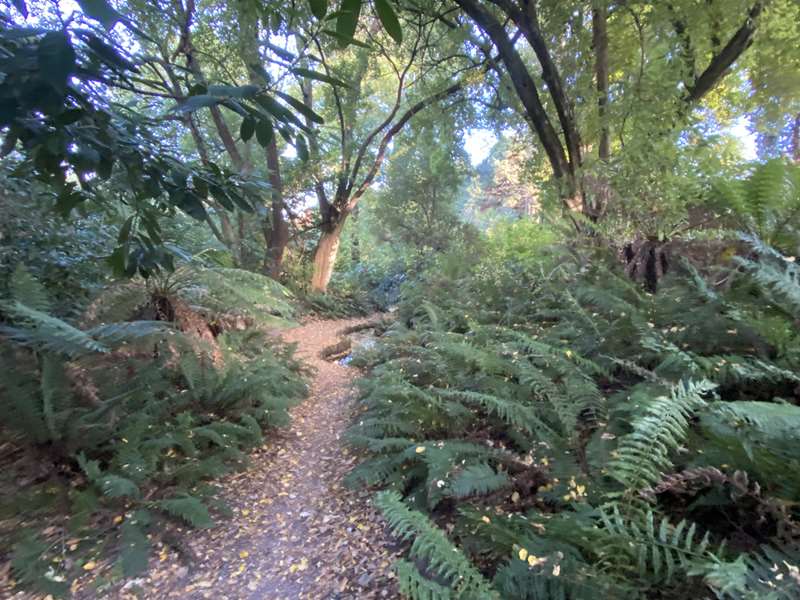
Other points of interest are a cafe (with restricted opening times), cannon and other small artillery pieces, some sculptures including wooden carved wombats, plenty of varieties of trees, pergolas, shelters with tables, shaded and unshaded tables, water tap and toilets. During Autumn there are a range of trees including avenues of Dutch Elms with lively Autumnal colours. We didn't notice any BBQs.
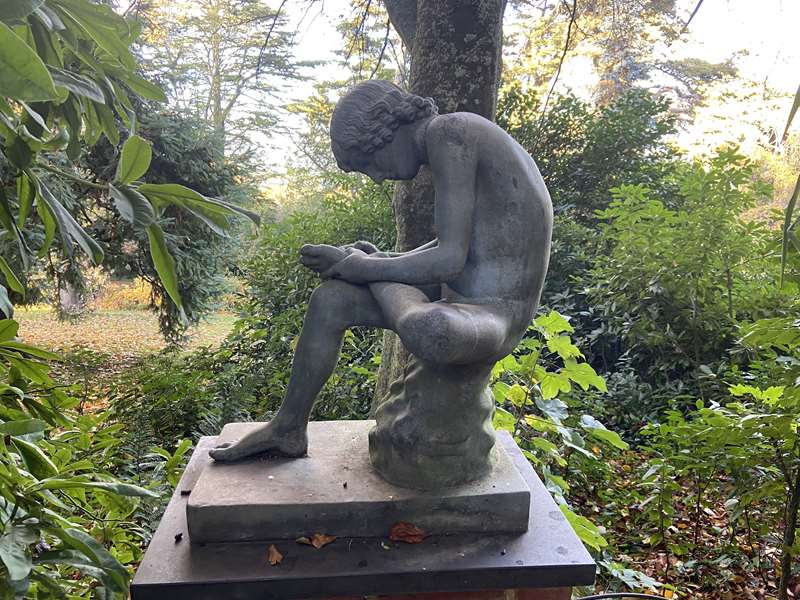
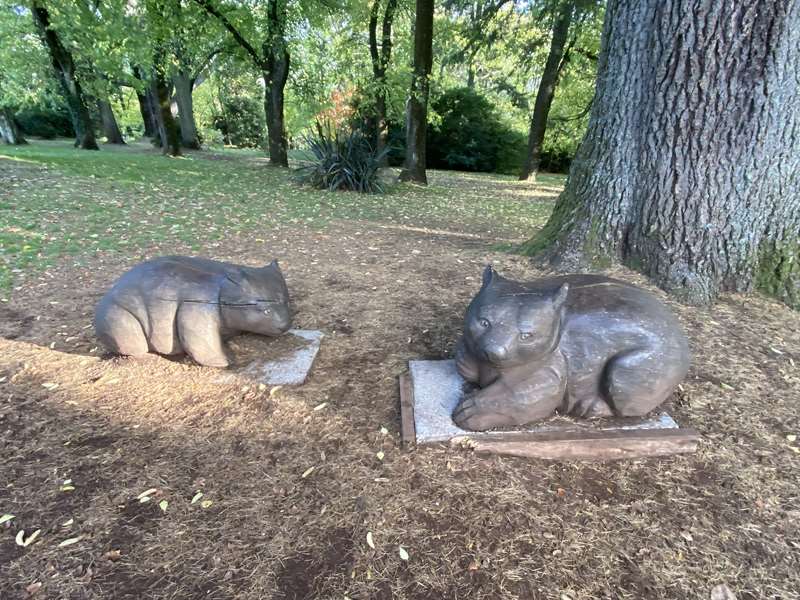
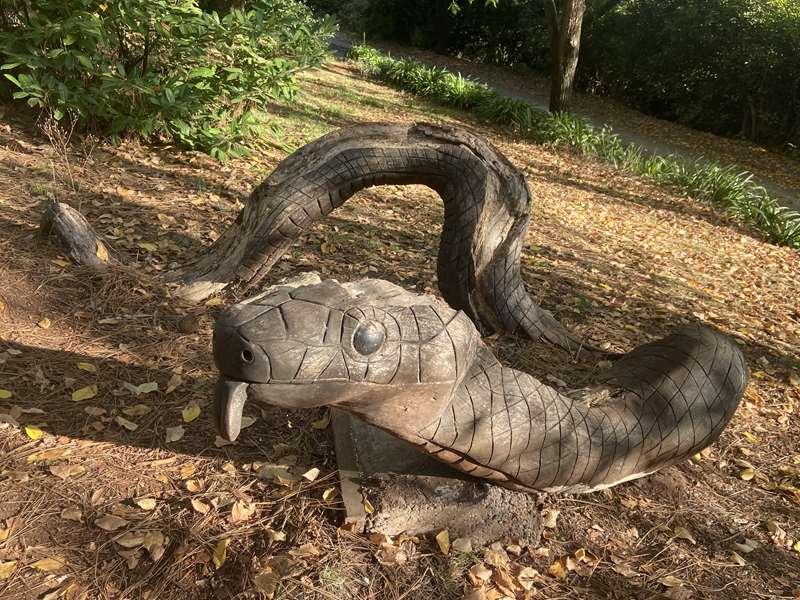
There are some bushes and plants but the garden is dominated by huge trees, many of which are labelled.
The site is hilly but there is a walking track and also a road which run across the slope to minimise the amount of uphill walking you have to do to enjoy the gardens.
Photos:
Location
23 Central Springs Road, Daylesford 3460 Map
Email Enquiry
Web Links
→ Wombat Hill Botanical Gardens (Daylesford Delights)
→ Wombat Hill House Cafe (Urban Spoon)
→ Friends of Wombat Hill Botanic Gardens Daylesford on Facebook









